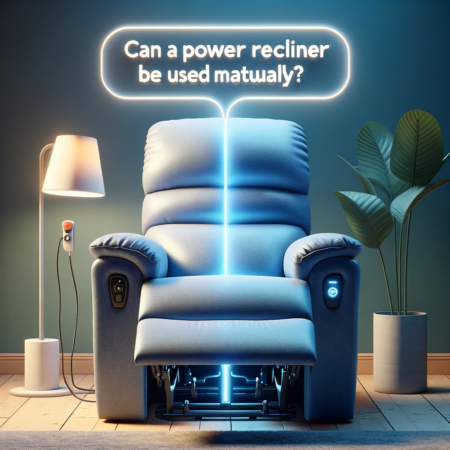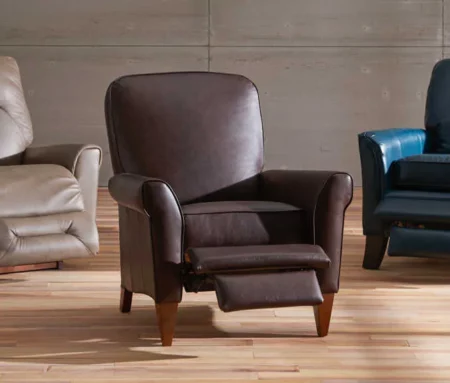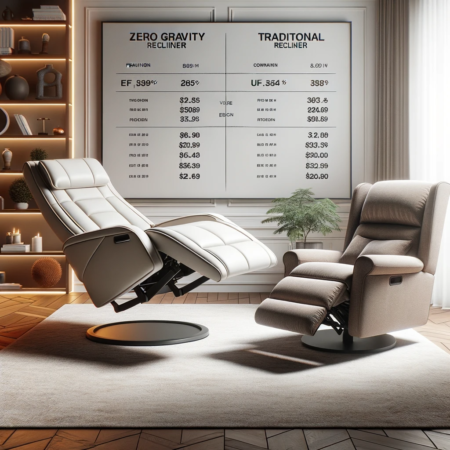Are you tired of your recliner not responding? Whether it’s refusing to recline, the footrest being stubborn, the wobbly base, annoying squeaks, or worn-out upholstery, these are the common problems many recliner owners face.
But worry not, we’ve got you covered with some simple solutions to make your recliner blues a thing of the past.
Understanding Recliner Woes
Before we dive into the nitty-gritty, let’s get a grasp on the primary components of your recliner.
A typical recliner comprises a motor, mechanism, handle, handset, footrest, base, frame, and your choice of fabric or leather upholstery. With these parts working together, you get the ultimate comfort zone.
But sometimes, things can go a bit haywire.
Common Recliner Problems and Their Solutions
Let’s explore the common problems and their solutions.
1. The Unresponsive Recliner
Problem: Your recliner seems to have a mind of its own, refusing to budge when you command it to recline or return to an upright position.
Solution: The motor and mechanism might need a little TLC. Check for any loose wires, and ensure the motor is receiving power. If the motor’s fine, the culprit could be a jammed mechanism. Lubricate the moving parts and gently wiggle the recliner back and forth to ease it into action.
2. The Stubborn Footrest
Problem: Your recliner’s footrest is stuck, and you can’t seem to get it to extend or retract smoothly.
Solution: Often, debris and dust accumulate within the mechanism, causing friction. Take a peek beneath the footrest and give it a good clean. Lubricate the hinges as well. If the issue persists, the problem might be with the handle or cable, so inspect those components too.
3. The Wobbly Base
Problem: Your recliner feels a bit wobbly or uneven, throwing off your relaxation game.

Solution: Start by checking the base and frame for any loose screws or bolts. Tighten them as needed. If the wobbliness persists, consider placing a small shim under the problematic leg to even things out.
4. The Squeaky Serenade
Problem: Every time you adjust your recliner, it sings you a squeaky song that’s more annoying than soothing.
Solution: Squeaking is often due to friction between moving parts. A silicone-based lubricant is your go-to hero here. Apply it generously to the hinges, pivot points, and any spot that seems to be causing the commotion.
5. The Upholstery Unrest
Problem: Your recliner’s fabric or leather is showing signs of wear and tear, from cracks to fading.
Solution: Prevention is key here. Regularly vacuum and gently wipe down your recliner to remove dust and dirt that can accelerate deterioration. If damage is already visible, consult the manufacturer’s guidelines for appropriate cleaning and conditioning methods.
Which Recliner Lasts the Longest?
| Recliner Type | Lifespan Expectation | Characteristics |
|---|---|---|
| Quality Leather Recliners | 10-20 years | Durable material, resistant to wear and tear |
| Solid Wood Frame Recliners | 15-25 years or more | Sturdy construction for extended longevity |
| High-Grade Fabric Recliners | 8-15 years | Dependable if well-cared-for; consider stain-resistant options |
| Steel Frame Recliners | 10-20 years | Robust build, often featuring advanced mechanisms |
What Causes Electric Recliners to Stop Working?
Here are the common reasons why your electric recliner stops working:
- Power Connection Issues: Loose or disconnected power cords can interrupt the flow of electricity.
- Faulty Remote or Control Panel: Malfunctions in the remote or control panel can prevent signals from reaching the recliner’s motor.
- Motor Problems: Burned-out motors or wiring issues can lead to complete loss of movement.
- Overload Protection: If the recliner is designed with overload protection, it might stop working temporarily to prevent damage.
- Tripped Circuit Breaker: A tripped circuit breaker can cut off power to the recliner.
- Internal Wiring Problems: Damaged or worn-out internal wires can disrupt the electrical circuit.
Conclusion
In a nutshell, now you’re all set to tackle those pesky recliner problems like a pro.
From sticky footrests to squeaky sounds, you’ve got the know-how to fix them up. Remember, a little care goes a long way in keeping your recliner comfy and cozy.
So go ahead, give your favorite seat some TLC, and keep the relaxation rolling!
Frequently Asked Questions
What Is the Average Life of a Recliner?
Recliners typically last around 10 to 15 years on average. However, the exact lifespan can vary based on factors like usage frequency, quality of materials, and how well you take care of it. A well-maintained recliner can even exceed this range.
Why Do Recliners Break Easily?
Recliners can break easily if they’re not properly maintained or if they’re of lower quality. Excessive force, rough handling, and ignoring early signs of problems can lead to breakdowns. Regular maintenance and gentle usage can significantly reduce the risk of your recliner breaking down.
Do Recliner Chairs Need Maintenance?
Yes, recliner chairs do need maintenance to ensure they stay in good shape. Regular cleaning, lubricating moving parts, and tightening loose screws can prevent issues like squeaking, jamming, or wobbling. Taking care of your recliner not only extends its lifespan but also ensures your comfort remains uninterrupted.




